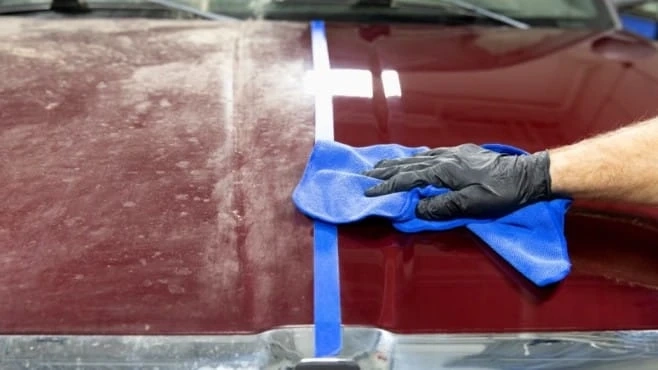When it comes to preserving the beauty and value of your car, paint correction plays a crucial role. Over time, your vehicle\'s exterior can suffer from imperfections, scratches, swirl marks, and oxidation, leaving it looking dull and tired. Car paint correction is the solution that can breathe new life into your car\'s appearance, making it look as good as new. In this comprehensive guide, we\'ll explore what car paint correction is, why it matters, and how it can transform your beloved vehicle.
What Is Car Paint Correction?
Car paint correction is a specialized process aimed at rejuvenating the paintwork of your vehicle. It involves the removal of imperfections, such as swirl marks, scratches, water spots, and oxidation, to reveal the flawless finish underneath. This meticulous process can significantly enhance your car\'s overall appearance.
The Importance of Car Paint Correction
1. Restoring Showroom Shine
Over time, exposure to the elements can cause your car\'s paint to lose its luster. Car paint correction brings back that showroom shine, making your vehicle look brand new.
2. Enhancing Resale Value
If you plan to sell your car, a well-maintained exterior can significantly increase its resale value. Potential buyers are more likely to pay a premium for a car that looks pristine.
3. Protecting Your Investment
Investing in car paint correction not only improves aesthetics but also provides a protective layer against future damage, including UV rays, environmental contaminants, and road debris.
The Car Paint Correction Process
1. Inspection
The process begins with a thorough inspection of your vehicle\'s paintwork. This helps identify imperfections, swirl marks, and scratches that need correction.
2. Washing and Decontamination
Before any correction work begins, the car is washed and decontaminated to remove dirt, grime, and other contaminants that could interfere with the correction process.
3. Paint Correction
This is the heart of the process, where skilled technicians use specialized tools and compounds to remove imperfections from the paint. It requires precision and expertise.
4. Polishing
After correction, the paint is polished to bring out its full shine and gloss, leaving a mirror-like finish.
5. Protection
To maintain the results of paint correction, a protective coating, such as ceramic coating, is applied. This provides long-lasting protection against environmental damage.
DIY vs. Professional Paint Correction
While some car enthusiasts may attempt DIY paint correction, it\'s a task best left to professionals. The intricate nature of the process requires expertise, specialized tools, and experience to achieve optimal results. Professional paint correction ensures a flawless finish without the risk of further damage.
Conclusion
Car paint correction is the ultimate solution for reviving your vehicle\'s appearance. Whether you want to enjoy your car\'s beauty to the fullest or increase its resale value, this process can work wonders. Don\'t let imperfections dull your vehicle\'s shine – invest in car paint correction today.
FAQs
1. How often should I consider car paint correction?
Car paint correction is typically done as needed, depending on the condition of your vehicle\'s paint. However, it\'s recommended every 1-2 years for long-lasting protection and shine.
2. Is car paint correction suitable for all types of paint?
Yes, car paint correction can be performed on all types of automotive paint, including clear coats and single-stage paints.
3. What\'s the difference between waxing and car paint correction?
Waxing provides temporary shine and protection, while car paint correction addresses underlying imperfections and restores the paint\'s true luster.
4. Can car paint correction remove deep scratches?
While car paint correction can improve the appearance of scratches, it may not completely remove deep or severe scratches.
5. How long does the car paint correction process take?
The duration varies depending on the extent of correction needed, but it typically takes a professional technician a day or two to complete the process.



